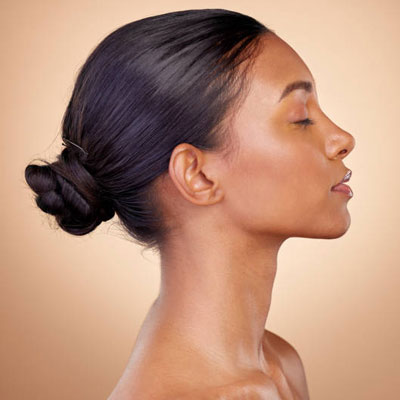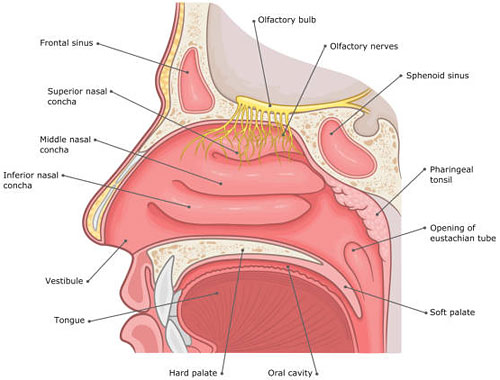
The 4 tenets of orofacial myofunctional therapy and their significance to overall health are:
This is the way we were designed to breathe. The nose has a built-in filtration system. As air passes through the nasal cavity, it is conditioned and prepared for entering the lungs. Bypassing the nose and breathing through the mouth allows unfiltered, unconditioned air to go directly to the lungs.
Nasal breathing is fundamentally important for the following reasons:

Paranasal sinuses produce the gas nitric oxide and release it into nasal airways. This gas widens blood vessels, increasing circulation, making it easier for oxygenated blood to reach organs and tissues. Nitric oxide normally reaches the lungs with inhalation, particularly during nasal breathing. Nitric oxide has a positive impact on cardiovascular health.
Sinuses moisten and warm (humidify) the air we breathe, preparing it for the lungs. Warm air is closer to body temperature and gentle to delicate lung tissue.
Cilia (hair-like structures lining the nose) trap allergens such as pollen and dust, which are prevented from entering the lungs.
Nasal breathing activates the part of the nervous system responsible for recovery (rest and digest) rather than the part responsible for survival/stress (fight or flight). Often people are unaware that they are mouth breathing.
Our lips should naturally rest together comfortably. Proper lip seal ensures we are nasal breathing day and night. Open mouth posture causes dryness of the oral cavity, which increases risk of tooth decay and gum disease. Dry chapped lips can be a sign of mouth breathing. Ineffective lip closure can also affect the ability to create certain speech sounds as well as impact eating and drinking.
Tongue posture/resting position is incredibly important! It may sound strange, but the way the tongue functions and rests can affect the whole body. The entire tongue should naturally rest against the roof of the mouth (palate) and slightly away from the front teeth (mouth should be closed with teeth slightly apart and lips comfortably sealed). The tongue should not rest on the bottom of the mouth or push against the teeth.
Improper tongue posture can be associated with inadequate airway space, mouth breathing, poor jaw and facial development (impacting facial aesthetics), misaligned teeth, and more.
The tongue is a very strong muscle that it is connected to other muscles and structures of the face and neck, impacting many aspects of orofacial function, and even head and neck posture. When the tongue rests on the palate, constant passive pressure widens and forms the shape of the palate. The widening (natural palatal expansion) allows adequate space for the teeth and proper formation of the upper jaw.
Tongue position guides facial growth. When the tongue does not rest in contact with the roof of the mouth, the palate becomes narrow and high, leading to a crowded dental arch, and stunted or elongated jaw/facial development.
Swallowing occurs at least 900 times per day. It involves the coordination of over 25 muscles. When a person swallows incorrectly, often compensatory patterns of movement are observed (recruitment of other facial muscles and/or neck muscles). Frequently a tongue thrust occurs. This is when the tongue pushes forward between the front teeth during swallowing. Tongue thrust is a common factor in orthodontic relapse. It may also cause the swallowing of air during eating and drinking, increasing the risk of stomach upset, gas and/or bloating.